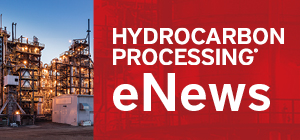October 2001
Gas Processing
Improve contaminant control in amine systems
These guidelines illustrate what every process engineer should know about solvent contamination and loss for sour gas processing facilities
This is a preview of our premium content. Thank you for your interest—please log in or subscribe to read the full article.
The Authors
Related Articles
- Proven methods to lower costs and boost safety in gas distribution operations
- Optimizing NGL treatment for sulfur and methanol reduction at Pembina NGL Corporation’s Redwater fractionation plant—Part 2
- Optimizing NGL treatment for sulfur and methanol reduction at Pembina NGL Corporation’s Redwater fractionation plant—Part 1






Comments